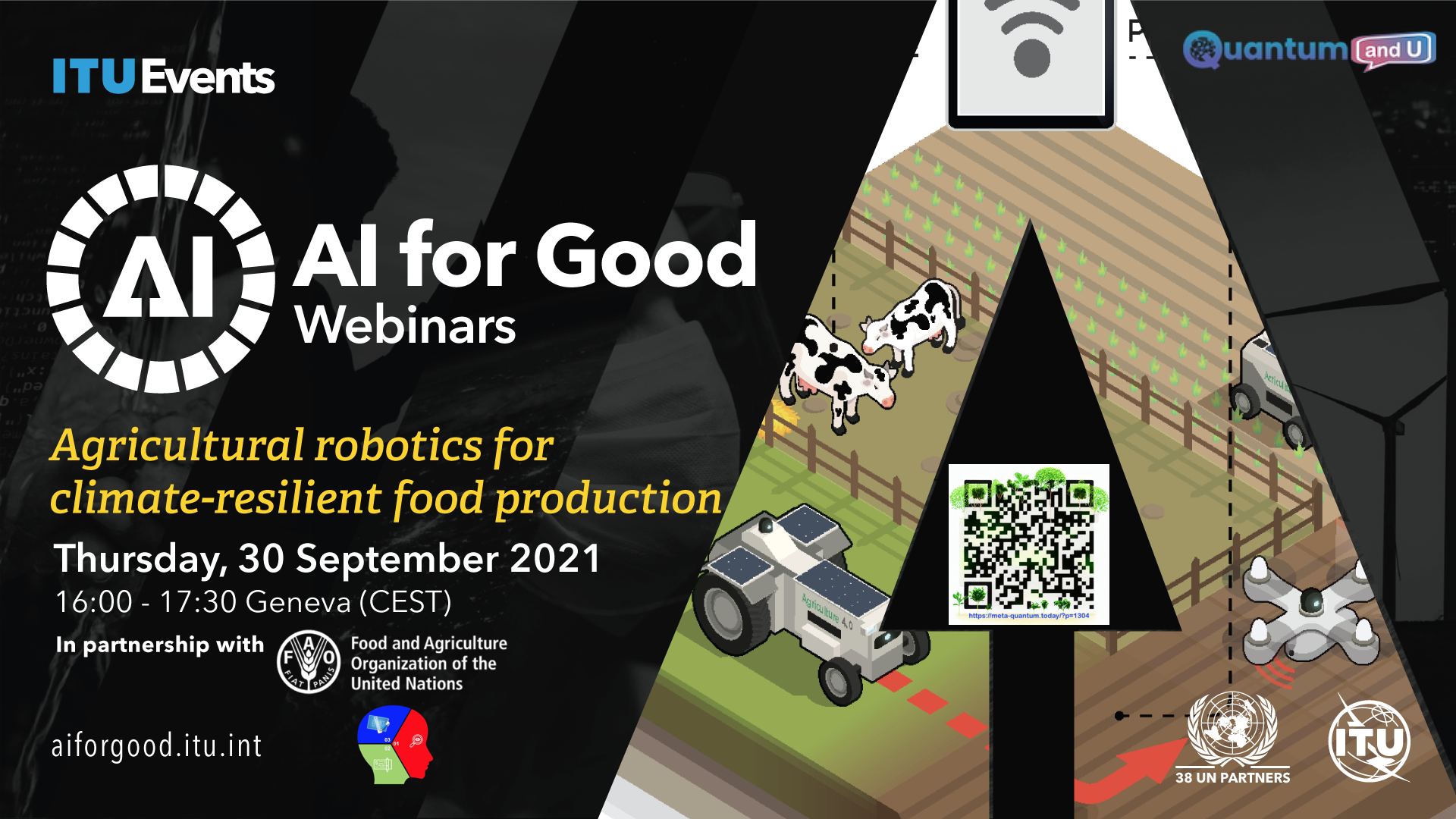
Introduction:
The AI for Good Webinars have brought together experts in the field to discuss the crucial topic of agricultural robotics for climate-resilient food production. Hosted by Guy Martinez Rora from the International Telecommunications Union (ITU), this webinar explores how artificial intelligence and robotics are shaping the future of agriculture. With a focus on sustainability and the United Nations’ Sustainable Development Goals, this session promises valuable insights from a diverse panel.
Agricultural Robotics for Climate-Resilient Food Production
Agricultural robotics is the use of robots in agriculture to perform tasks such as planting, weeding, harvesting, and monitoring crops. It is a growing field with the potential to revolutionize the way we produce food.
Climate change is a major threat to global food security. It is causing more extreme weather events, such as droughts, floods, and heatwaves, which can damage crops and reduce yields. Agricultural robotics can help farmers to adapt to climate change and make their production more resilient.
Here are some of the ways that agricultural robotics can be used to produce food in a more climate-resilient way:
- Precision agriculture: Agricultural robots can be used to collect data on crops and soil conditions, and then use this data to apply inputs such as water and fertilizer more precisely. This can help to reduce the use of resources and minimize the impact of agricultural production on the environment.
- Automated tasks: Agricultural robots can automate many of the tasks that are currently performed by hand, such as planting, weeding, and harvesting. This can free up farmers to focus on other tasks, such as planning and marketing. It can also help to reduce the reliance on migrant labor, which is often vulnerable to exploitation.
- Climate-smart farming practices: Agricultural robots can be used to implement climate-smart farming practices, such as cover cropping and crop rotation. These practices can help to improve soil health, reduce water use, and increase carbon sequestration.
Agricultural robotics is still in its early stages of development, but it has the potential to play a major role in helping us to produce food in a more climate-resilient way.
Market size for Southeast Asia
The market for agricultural robotics in Southeast Asia is expected to grow rapidly in the coming years. This is due to a number of factors, including:
- The growing population of Southeast Asia is driving up demand for food.
- The region is facing a number of challenges related to climate change, such as droughts and floods.
- The region has a large and growing agricultural sector.
- Governments in Southeast Asia are investing in agricultural technology.
According to a report by Research and Markets, the market for agricultural robots in Southeast Asia is expected to reach $2.5 billion by 2027. The report also states that the market is expected to grow at a compound annual growth rate (CAGR) of 17.5% from 2022 to 2027.
The largest market for agricultural robots in Southeast Asia is expected to be Indonesia. This is due to the country’s large agricultural sector and its growing population. Other major markets for agricultural robots in Southeast Asia include Thailand, Vietnam, and Malaysia.
The following are some of the key players in the agricultural robotics market in Southeast Asia:
- Agribots (Malaysia)
- DroneTech (Vietnam)
- Farm Robotics (Thailand)
- Garuda Robotics (Indonesia)
- Greeneye Technology (Singapore)
These companies are developing and deploying a variety of agricultural robots, including autonomous tractors, robotic harvesters, and drones.
The agricultural robotics market in Southeast Asia is still in its early stages of development, but it has the potential to grow rapidly in the coming years. This is due to the region’s growing population, its agricultural sector, and its investment in agricultural technology.
Related Sections:
- Setting the Stage for Agricultural Robotics:
- The ITU’s role in advancing information and telecommunication technologies.
- The mission of AI for Good in collaboration with the XPRIZE Foundation and UN agencies.
- Exploring the significance of robotics in achieving sustainable development goals.
- The Transformative Potential of Agricultural Robotics:
- The drivers behind the shift from traditional farming to smart farming.
- Overcoming challenges in technology adoption.
- The importance of building capacity and addressing data ownership issues.
- Real-World Applications:
- Dr. Salazar’s presentation on how autonomous robotic solutions enhance productivity and sustainability.
- The use of AI in reducing labor and chemical costs while providing crop intelligence reports.
- The modular approach to robotics with the “Digital Farmhand.”
- Educating the Future Generation:
- Promoting STEM education through robotics in schools.
- Encouraging rural communities to embrace robotics for sustainable farming.
- The Industry Perspective:
- Aubrey’s insights into the agricultural technology revolution.
- AppHarvest’s mission to decentralize food production.
- Addressing Challenges:
- Connectivity issues in rural areas.
- The need for awareness and knowledge sharing.
- The potential of robotics in various farm sizes.
Conclusion:
The AI for Good Webinar on Agricultural Robotics has shed light on the transformative power of artificial intelligence and robotics in agriculture. It’s evident that these technologies are not only improving productivity and sustainability but also contributing to education and rural development. While challenges remain, the collective efforts of experts, organizations, and governments can help pave the way for a more climate-resilient and food-secure future.
Key Takeaways:
- Agricultural robotics is a key driver of sustainability and can help achieve UN Sustainable Development Goals.
- Robotics and AI reduce labor costs, chemical usage, and environmental impact while improving crop yield predictions.
- STEM education programs are vital for encouraging the adoption of robotics in rural areas.
- The agricultural technology industry is on the cusp of a significant transformation.
- Connectivity remains a challenge in rural areas, hindering technology adoption.
References:
- International Telecommunications Union (ITU): https://www.itu.int/
- AI for Good: https://aiforgood.itu.int/
- XPRIZE Foundation: https://www.xprize.org/
- AppHarvest: https://www.appharvest.com/


